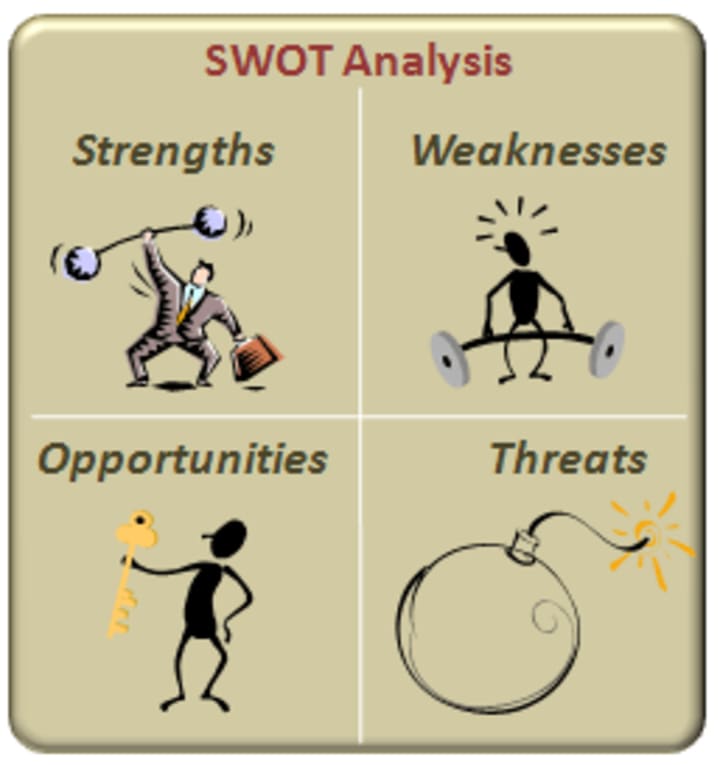Definition and types of business competitive advantage
A company's ability to identify its competitive advantage can ensure long-term business success
According to the Oxford Dictionary of Business and Management, “…the ultimate target of a firm’s competitive advantage strategy is to reduce costs, without compromising consumers’ perceived value”.
This can be achieved:
a) By improving the performance of the entire company, as an organization with various functions,
b) By improving the appeal of the company's products to the market, and
c) By enhancing customer value, through the systematic application of marketing methods, and especially product promotion, positioning and advertising.
The different types of a company's competitive advantage are based on certain functions that take place within the company's scope of activities, and they directly or indirectly result from those activities. Thus, different types of competitive advantage include:
1) Product differentiation
Product differentiation is based on the principle that each individual product is characterized by distinct and unique properties. This leads to a form of monopoly, which increases, as a result, the firm’s competitive strength.
2) Transferability of skills through a variety of industries
It is a form of competitive advantage that enables a firm to compete against and finally defeat its rivals. It transforms the entire organization into an invincible competitor that can survive even in the most challenging conditions.
3) The ability to target appropriate and well-defined market niches through market research
A company with this ability can undoubtedly achieve a better market orientation, compared to competitors, especially when market survival depends on very fine details.
4) Achievement of the highest level of expertise
The value of highly skilled personnel, combined with the most efficient and latest means, techniques, and methods of production, cannot be overstressed, since it may be the decisive factor that will determine a company's profitable operation or exit from a market.
5) The ability to claim the highest possible market share
In highly competitive markets, this “raw” form of competitive advantage is vital, because: “Winner takes it all.”
6) Identification of the weaknesses that may characterize a company's products or functions
The ability to identify any weaknesses within a company can result in an indirect competitive advantage, based on the company’s willingness and effort to cure these weaknesses and turn them into strengths, for example, by achieving higher customer satisfaction and offering higher customer value.
7) The ability to highlight and further improve a company's strong points
This is another form of competitive advantage, since, as it has already been stated above, by highlighting a company’s strengths and eliminating its weaknesses, at the same time, the company can enjoy a stronger position in the market.

8) The ability to have an extensive owned distribution network or have access to a distribution network that is owned by third parties
The easier it is for a certain product to reach a customer, the higher is the possibility for the customer to be satisfied with the delivery of the product, which results in better consumer opinion about the product, better brand image, and finally, an increased competitive position.
9) Exclusive access to certain strategic resources for the company, either tangible or intangible
These prove to be vital for the company's domination of a small niche market or a broader market segment, since they are the “lifeblood”, without which, the company's operation is doomed to failure.
10) Sound financial management
A company's financial resources should be used in the most appropriate way and at the right time, by making the right investment or divestment decisions. In this way, borrowing can be kept at optimal levels, eliminating thus the related finance costs, e.g. interest, while future development plans, aiming to facilitate more efficient production, may be realized, based solely on equity capital. Therefore, it is obvious that this results in a more powerful negotiating position.
11) Access to new applications of technology and maximum exploitation and usage of these resources
This may be either generic, i.e. electronic devices processing information, or specific, such as special appliances, systems, techniques or methods, leading to an outward shift of the firm’s production possibility frontier, and enabling the achievement of a higher volume of production, in a more cost-effective manner. The final result is a stronger competitive advantage.
12) Continuous evaluation of an ever-changing business environment, both at local and international level
This leads to an assessment of the company’s business strategy that is currently implemented, so that it can be constantly updated, resulting in a stronger company position, always ahead of competitors.
Further reading:
What is competitive advantage? Definition & examples of competitive advantage
Competitive advantage-Wikipedia
About the Creator
thepavsalford
Hi,
I have written articles for various websites, such as Helium, Hubpages, Medium, and many more.
Currently, I work as a translator. I have studied Tourism Management at college.
See you around on Vocal Media!






Comments
There are no comments for this story
Be the first to respond and start the conversation.